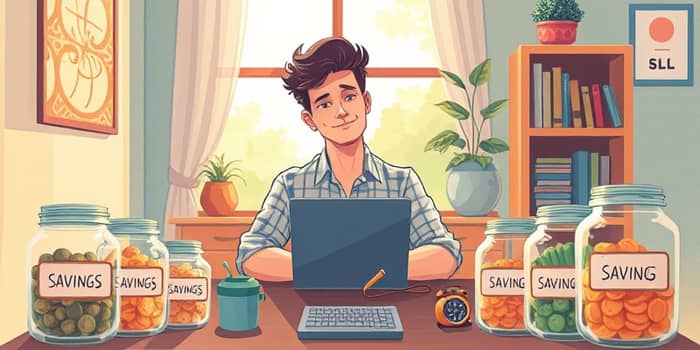An emergency fund is more than a simple savings account—it’s a dedicated reserve meant to cover unexpected expenses like sudden medical bills, urgent car repairs, or temporary job loss. By keeping these funds separate, you establish a financial buffer that safeguards your well-being and protects you from high-cost borrowing or dipping into long-term savings.
Having a well-funded emergency account grants you peace of mind. When life throws curveballs, you won’t have to scramble for credit cards, loans, or risk selling investments at a loss. Instead, you can face crises with confidence, knowing you have a reliable cushion ready to deploy.
Common Types of Financial Emergencies
Life is unpredictable. These are some of the most frequent scenarios that demand immediate cash:
- Medical emergencies or unexpected hospital bills
- Major car repairs after an accident or breakdown
- Home or appliance repairs (e.g., broken furnace, leaky roof)
- Sudden unemployment or a significant reduction in income
Experts categorize these as either spending shocks (urgent one-time costs) or income shocks (loss or drop in earnings). Without an emergency fund, such events can rapidly spiral into long-term financial stress.
How Much Should You Save?
The general rule of thumb is to accumulate three to six months’ worth of living expenses. However, individual circumstances can shift this target up or down:
If you’re just starting, aim for an initial goal of $500–$1,000, then steadily build toward the full three- to six-month benchmark. Households with dependents, single-income earners, or those in high-cost areas should lean toward the upper end of the range, while dual-income families and those with strong job security may target the lower end.
How to Start and Build Your Emergency Fund
Creating a robust safety net doesn’t happen overnight. Follow these practical steps:
- Set a small, achievable initial goal (e.g., $500) and celebrate once you hit it.
- Automate savings by designating 5–10% of each paycheck to a dedicated account.
- Track your spending to distinguish essential costs from discretionary purchases.
- Trim non-essential expenses—cancel unused subscriptions or dine out less often—to free up more cash.
- Regularly review and adjust your target as your life circumstances change.
Where to Keep Your Emergency Fund
The key is accessibility. Park your money in a high-yield savings account at a reputable bank or credit union. These accounts offer both liquidity and safety, ensuring funds are available within hours, not weeks. Avoid tying this reserve to volatile investments like stocks or real estate, which could fluctuate in value or impose withdrawal delays.
Current Statistics: How Americans Are Faring
Despite the clear benefits, many households remain vulnerable:
- Only 46% of Americans have enough savings to cover three months of living expenses.
- 24% report having no emergency fund at all.
- Gen Z (34%) and Millennials (28%) are more likely to have zero savings compared to Baby Boomers (only 10% without six months’ buffer).
Regional differences also exist: 27% of Southerners and Midwesterners lack any emergency savings, versus 18% in the Western states.
Who Needs a Larger Fund?
Certain groups should aim for a fund exceeding six months of expenses. This includes single parents, self-employed individuals with variable income, and anyone in a high-cost-of-living region. If you rely on commission-based work or live paycheck to paycheck, err on the side of caution by saving more.
The Psychological and Behavioral Benefits
An emergency fund offers more than just financial relief—it also promotes healthier money habits. With a safety net in place, you’re less likely to resort to high-interest borrowing or make impulsive decisions that erode your long-term wealth. The resulting mental relief can lower stress levels, improve sleep quality, and give you greater confidence to pursue career changes or investment opportunities.
Over time, the discipline of regular saving can spill over into other areas of life, fostering a mindset of preparedness and resilience. You’ll find it easier to resist lifestyle inflation, stick to budgets, and set strategic goals for retirement or major purchases.
Actionable Steps to Begin Today
Ready to take control of your financial future? Here’s how to get started right now:
- Open a separate high-yield savings account dedicated solely to emergencies.
- Set up an automatic transfer of 5–10% of each paycheck.
- Identify one subscription or habitual expense to cut this month and reallocate those funds.
- Review your monthly budget and categorize all expenses; channel any surplus into your emergency fund.
- Track your progress visually—use a chart or app to celebrate milestones and stay motivated.
Conclusion
Establishing an emergency fund is a critical pillar of long-term financial wellness. It creates a buffer against life’s uncertainties, reduces anxiety, and prevents high-cost debt. Whether you’re saving your first $500 or striving for a six-month cushion, each deposit brings you closer to lasting security. Start today, stay consistent, and watch your fund— and your peace of mind—grow stronger over time.
References
- https://www.mycvcu.org/blog/importance-of-building-an-emergency-fund
- https://www.bankeasy.com/personal/customer-resources/what-is-a-good-amount-for-an-emergency-fund
- https://www.nerdwallet.com/article/banking/emergency-fund-why-it-matters
- https://www.nerdwallet.com/article/banking/emergency-fund-calculator
- https://investor.vanguard.com/investor-resources-education/emergency-fund/why-you-need-one
- https://www.bankrate.com/banking/savings/emergency-savings-report/
- https://dfi.wa.gov/financial-education/information/importance-having-emergency-savings-account
- https://www.wellsfargo.com/financial-education/basic-finances/manage-money/cashflow-savings/emergencies/










